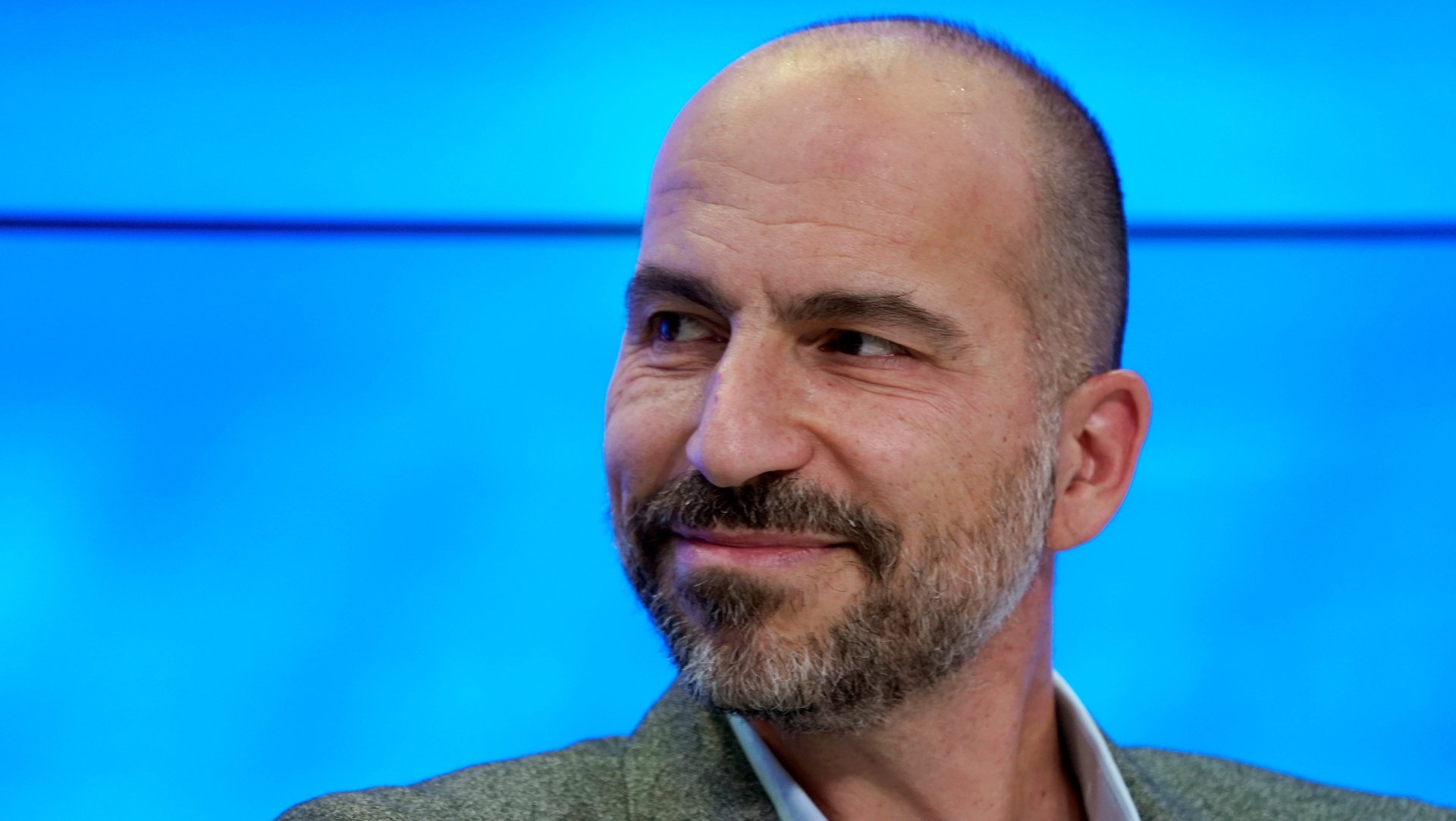Uber CEO’s whirlwind trip to India shows not all is well
Ending months of speculation about its India operations, Uber has made it clear that the company is not looking to drive out of the country.


Ending months of speculation about its India operations, Uber has made it clear that the company is not looking to drive out of the country.
“India is a key component of our growth plan,” CEO Dara Khosrowshahi told television channel ETNow on Feb. 22. “If you look at the market, it’s one of our healthiest markets in terms of growth rates…When I think about Uber and where we are going to be five to 10 years from now, our success in India is going to play a vital part in the growth of this company and how we do in terms of innovation and in terms of where we are within the global mobility ecosystem.”
Khosrowshahi is on a 48-hour visit to India, during which he will meet government officials and interact with Uber’s local team and the media.
He is scheduled to meet prime minister Narendra Modi, finance minister Arun Jaitley, and commerce minister Suresh Prabhu today (Feb. 23), according to sources in the company.
“The purpose of the visit mainly is to build bridges, make people understand that Uber remains aggressive in India, and improve relationships with the government,” a highly-placed source at Uber India told Quartz, requesting anonymity. “Khosrowshahi wants to convey to the government that Uber will continue to invest in the country and hire a lot more.”
India is one of Uber’s fastest-growing markets, accounting for over 10% of its trips globally. The company has over 300,000 active drivers in the country and does more than 10 million weekly trips here.
However, the San Francisco-based firm, which launched in India in 2013, lags homegrown rival Ola on several parameters like the number of operational cities, app downloads, number of active drivers, and even market share, according to market intelligence firm KalaGato.
While the two companies have battled fiercely for years, speculation has been rife that Uber may either exit India or enter some kind of a merger agreement with Ola.
Merger speculation
Such rumours surfaced late last year after Japan’s Softbank, Ola’s biggest investor, announced plans to invest in the US company, too.
In January, the buzz got louder after Softbank board director Rajeev Mishra said Uber must focus on its core markets: the US, Europe, Latin America, and Australia.
The speculation about Ola acquiring Uber’s India business was based on the latter’s history in China. In 2016, after having invested about $2 billion over a period there, Uber called it quits, selling its business to Chinese rival Didi Chuxing.
However, according to Khosrowshahi, Uber isn’t thinking along those lines in India.
On Feb. 22, when asked about the possibility of a merger with Ola, he said: ”I think it’s too soon to tell and certainly it’s fun to speculate about. Right now my focus is on the quality of our operations and our teams. And that’s why I am here. I am here to see the team, meet with ministers, etc, understand the market. At this time I am not really focused on M&As (mergers and acquisitions).”
Sharing Softbank
Even as analysts try to gauge the implications of Uber and Ola sharing a common investor in Softbank, Khosrowshahi said backing both companies was a great proposition for the Masayoshi Son-led firm.
“Softbank has a huge amount of capital and they invest in significant categories…I think that the bet that they’re making is that over a period of time, ride-sharing can be an alternative to car ownership. That means you’re not going to have a win-lose, you’re going to have a win-win in terms of the players in the space,” he said.
Having a common investor with its cut-throat opponent was “not yet” awkward, he said, adding that Uber will continue to face-off against Ola.
“We’re going to continue to compete with Ola,” Khosrowshahi said. “They’re a strong competitor but our driver sentiment, our rider sentiment, and our quality continues to be market-leading and we want to make sure that continues going forward. And Softbank can win either way.”